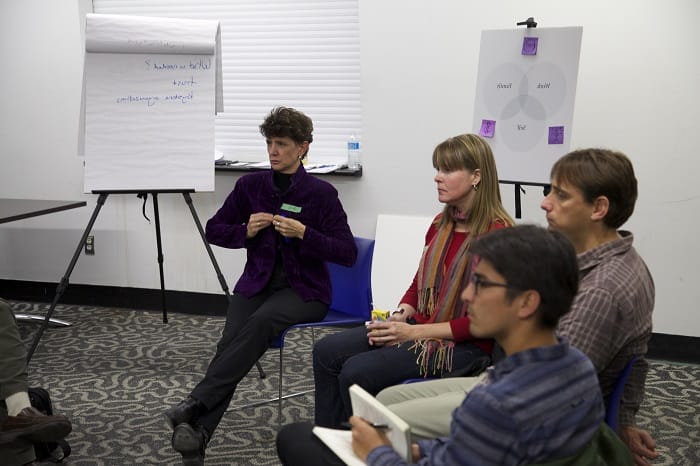The Interconnection of Social Problems essay
The interconnection of social problems influences the quality of life. The link between poverty and crime is obvious because socioeconomic status of individuals affects their motivation and behaviors. At the same time, racial stratification is closely connected with a number of social problems, including poverty and crime. The article “Race, poverty and punishment: The impact of criminal sanctions on racial, ethnic, and socioeconomic inequality” by Darren Wheelock and Christopher Uggen discusses the impact of criminal sanctions on racial and gender inequality. As Wheelock and Uggen (2006) point out, “the association between crime, punishment, and poverty has long been the subject of sociological and criminological investigation”(p. 1). In fact, this issue is of great importance for all members of society because social problems affect the quality of life, social development and individual identity. The major goal of this paper is to illustrate the interconnection of social problems which are caused by crime, punishment, and poverty.
In order to discuss the interconnection of social problems, it is necessary to give explanation to five core arguments made by the authors of the article. These arguments help the reader to find the link between crime, punishment and poverty.
First, criminal sanctions and victimization work to form a system of disadvantage that perpetuates stratification and poverty. According to Wheelock & Uggen (2006), “recent patterns of criminal justice policy marked by dramatic increases in all forms of criminal justice sanctions, however, have shifted attention to the role of punishment in contributing to racial and ethnic inequality” (p. 1). Racial stratification is influenced by victimization and punishment. The rate of incarceration of racial minorities is higher than that of whites. As a result, victimization affects family ties and fosters poverty. Criminal sanctions can be viewed as “both legal and informal barriers to becoming productive citizens at work, responsible citizens in family life, and active citizens in their communities” (Uggen & Thompson, 2006, p. 281).
Second, punishment impacts individuals convicted of felonies, as well as their families, peer groups, neighborhoods, and racial group. According to state and federal laws, individuals convicted of felonies have no right to fully participate in everyday activities, which refer to “labor markets, politics, family life, and educational institutions” (Wheelock & Uggen, 2006, p. 3). Therefore, it is necessary to have an understanding of the limited rights, which involve a wide range of civil disabilities. Punishment may perpetuate not only racial stratification, but also stratification along class and gender lines.
Third, after controlling for population differences, African Americans are incarcerated approximately seven times as often as Whites. The high rate of incarceration can be explained by continual racial inequalities in the U.S. criminal justice system. According to researchers, “the era of mass incarceration can be understood as a new stage in the history of American racial inequality”(Western & Wildeman, 2009, p. 221). Undoubtedly, the social impact of mass incarceration is negative because it poses serious risk for the younger generations of African Americans.
Fourth, variation in criminal punishment is linked to economic deprivation. As a rule, criminal sanctions and other types of criminal punishment fall on poor people, the so-called impoverished elements of society who have no any privileges. In other words, the product of economic deprivation is criminal activity (Western & Wildeman, 2009). Actually, economic inequality affects minority groups exacerbating the consequences of the practices of the U.S. penal system. Criminal punishment linked to economic deprivation has a strong impact on black families.
Fifth, as the number of felons and former felons rises, collateral sanctions play an ever-larger role in racial and ethnic stratification, operating as an interconnected system of disadvantage. The increased rate of crime has become a real problem for the local authorities as it involves the increase in building new prisons. Collateral sanctions influence racial and ethnic stratification because collateral consequences demonstrate negative effects on people living in high incarceration neighborhoods. The status of people who live in these communities can be defined as “socially dangerous”. In other words, collateral sanctions work as the elements of an interconnected system of disadvantage, which fosters racial and ethnic stratification. Without a doubt, collateral sanctions exacerbate racial injustice in the American society. The huge number of African Americans behind the bars can be viewed as a method to promote racial stratification. Black children are raised in families, which have direct relation to the U.S. criminal justice system (Wheelock, & Uggen, 2006; Western, & Wildeman, 2009).
Conclusion
Thus, it is necessary to conclude that public perception of crime, punishment and poverty is associated with continuing concerns. The high rate of criminal activity is caused by poverty and correlated with poverty. The results of recent studies point out to the fact that the interconnection of social problems requires thorough investigation. It has been found that criminal sanctions and victimization contribute to the growth of the so-called system of disadvantage that fosters racial and ethnic stratification and poverty.
Do you like this essay?
Our writers can write a paper like this for you!




